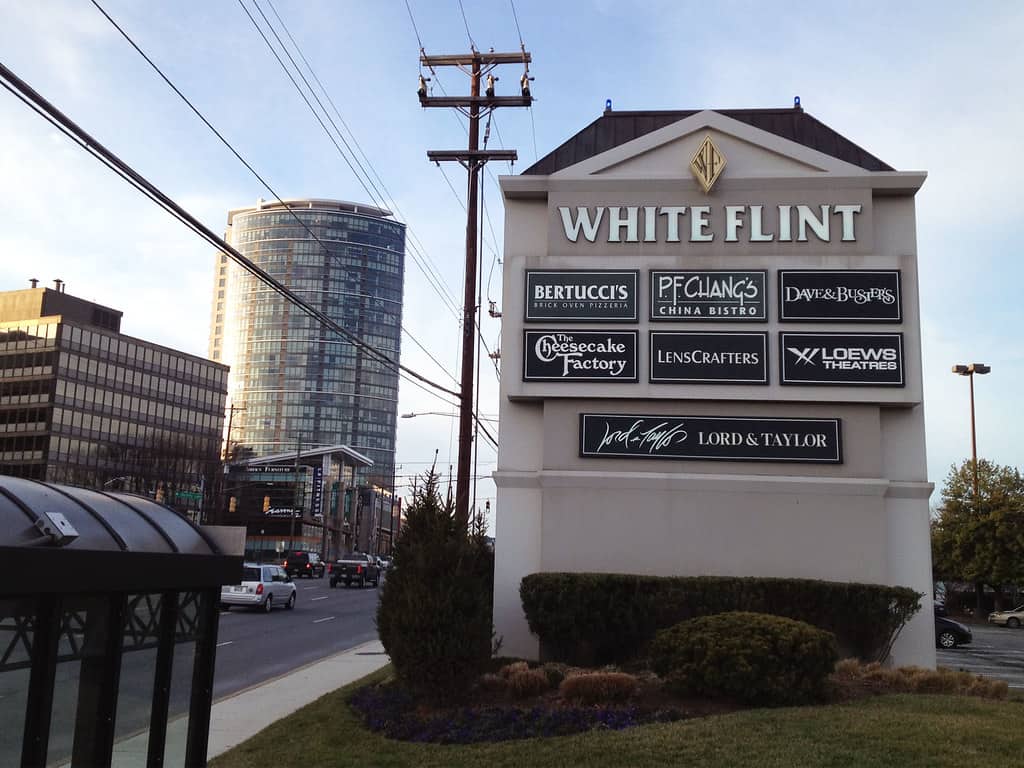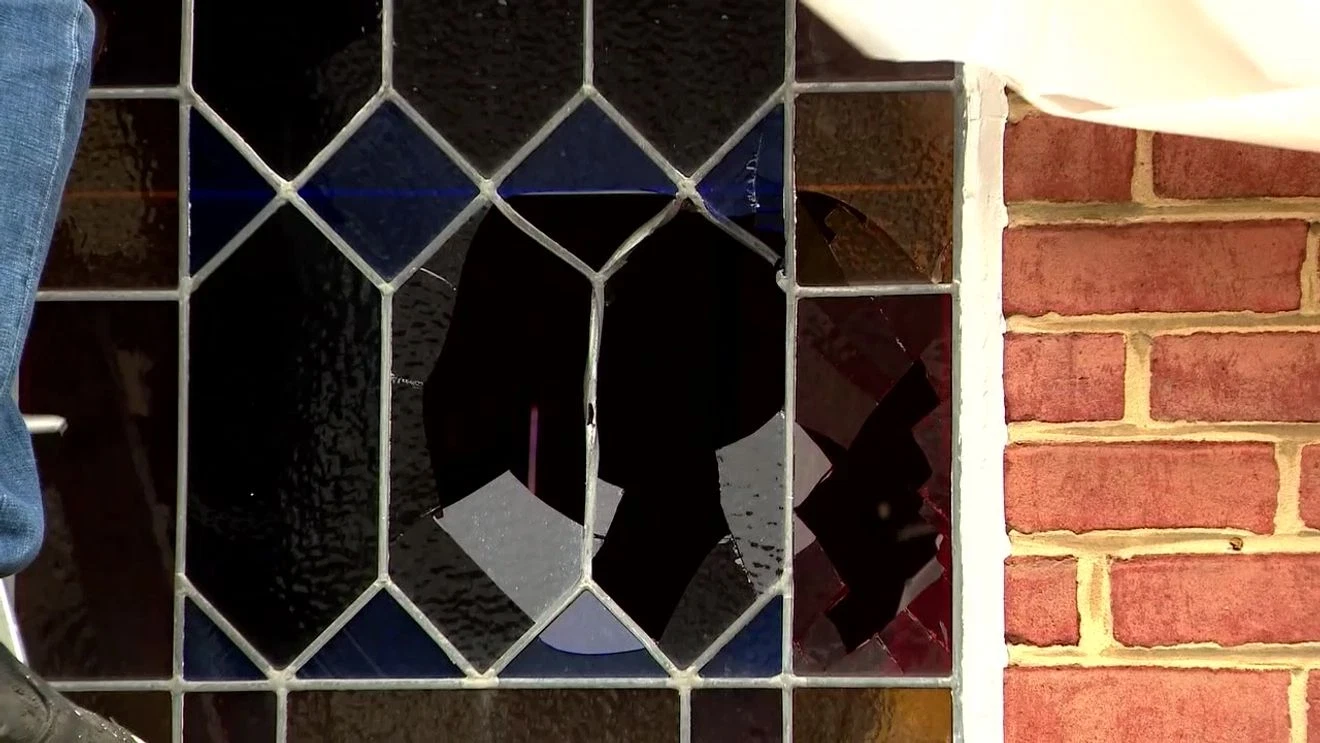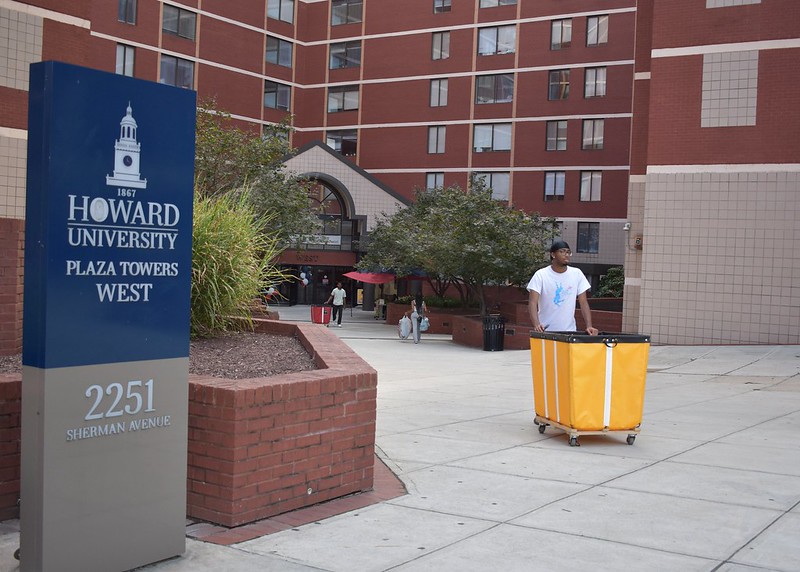Once hailed as a crown jewel of suburban retail, White Flint Mall in Rockville, Maryland, now exists only in memory and court documents. From its glitzy opening in 1977 to its dramatic legal battles and demolition, White Flint’s story reflects both the golden age of malls and the complex realities of urban redevelopment.
As of 2023, the once-bustling shopping center is completely gone—reduced to a cleared parcel of land awaiting the next phase of its life. But the path to that blank slate was anything but simple.
The Rise: When White Flint Mall Was Everything
White Flint Mall officially opened on March 2, 1977, as a bold vision by Lerner Enterprises and The Tower Companies. Located along Rockville Pike in Montgomery County, the 45-acre site was purpose-built to deliver a luxury shopping experience to Washington, D.C.’s growing suburbs.
Anchored by Lord & Taylor and Bloomingdale’s, the mall positioned itself as a high-end alternative to regional rivals. Soon after opening, I. Magnin launched its only East Coast location within White Flint, occupying the mall’s second and third floors.
Unique design flourishes set it apart. Via Rialto, a Venice-inspired corridor, welcomed diners and boutique shoppers with upscale flair. Meanwhile, the Georgetown-themed third floor added urban chic to suburban convenience. Perhaps most innovative was the Intermission Nightclub and Dining Disco, the first discotheque inside a shopping mall in the U.S.
Retailers like Raleigh Haberdasher joined early on, targeting affluent shoppers from Bethesda and Potomac. White Flint wasn’t just a mall—it was a destination.
Thriving Through the ’80s and ’90s
By the 1990s, White Flint had matured into one of the region’s most popular retail hubs. Foot traffic remained strong thanks to its anchors, but the mall also adapted to changing tastes.
In 1993, Borders Books took over the space vacated by I. Magnin, bringing a café-style bookstore that appealed to a more relaxed, modern consumer. Three years later, Dave & Buster’s replaced the original Restaurant Row space, further diversifying the mall’s entertainment mix.
Even the food court—dubbed The Eatery—underwent a neon makeover in the ’80s, shifting away from its original earthy tones to better compete with more vibrant shopping destinations like Tysons Corner and Westfield Montgomery.
National brands such as Banana Republic and H&M arrived in the 2000s, and the mall even introduced its own store credit card to foster customer loyalty. A custom “White Flint-opoly” board game marked the mall’s 25th anniversary in 2002, a playful nod to its legacy.
The mall’s success was also helped by the adjacent Metro Red Line station, originally called White Flint and later renamed North Bethesda. Opened in 1984, it delivered a steady stream of commuters and shoppers directly to the mall’s doorstep.
The Fall: Legal Disputes and Store Departures
By the early 2010s, White Flint Mall was struggling to stay relevant. In November 2011, Lerner Enterprises announced plans to redevelop the site into a mixed-use space with residences, office buildings, retail, and a hotel.
This redevelopment marked the beginning of the end. In 2012, Bloomingdale’s closed its doors. By 2013, demolition of the department store had begun. Other key tenants, such as The Cheesecake Factory and Loews Cinemas, exited soon after.
Dave & Buster’s was evicted in 2014, and P.F. Chang’s closed on January 4, 2015—the same day White Flint Mall officially shut down.
Demolition and Legal Battle with Lord & Taylor
Demolition didn’t happen overnight. Work began on July 7, 2015, starting with the garage near Bloomingdale’s former site. By early 2016, the entire mall was gone—except for Lord & Taylor and its parking garage.
Why? A 1975 agreement stated that the mall must operate as a “first-class retail center” through 2042—a clause meant to protect anchor tenants like Lord & Taylor.
When Lerner pressed forward with demolition, Lord & Taylor sued, arguing that the redevelopment breached the contract. In August 2015, a Montgomery County jury awarded the retailer $31 million in damages, covering lost business and relocation costs. The verdict was later upheld by the Fourth Circuit Court of Appeals in 2016.
Ironically, Lord & Taylor stayed open on an otherwise empty site for five more years, the sole retail survivor. It finally closed on December 28, 2020, after the company announced the closure of all 38 of its remaining locations nationwide.
By fall 2023, the last remnants of White Flint Mall had been demolished.
A Vision Deferred: Redevelopment and Missed Momentum
When plans were first unveiled in 2011, Lerner Enterprises envisioned:
-
2,500 residential units
-
1 million square feet of retail and restaurants
-
Four office buildings
-
A 300-room hotel
-
A 25-year construction timeline
But progress stalled. While nearby Pike & Rose, developed by Federal Realty, rapidly became a vibrant mixed-use hub, White Flint’s redevelopment remained in limbo—largely due to the years-long legal battle with Lord & Taylor.
Even high-profile opportunities were lost. The White Flint site was briefly floated as a candidate for Amazon HQ2, but ultimately lost out to Crystal City, Virginia, and New York City.
Infrastructure and the Road Ahead
While the buildings were gone, the land beneath continued to evolve. Montgomery County invested $74 million in the White Flint West Workaround, a roadway infrastructure project designed to replace the mall’s outdated loop system and improve access for future development.
That construction wrapped in March 2023, creating new roads and walkable pathways to better connect Rockville Pike with surrounding neighborhoods—an essential step toward turning the parcel into a viable mixed-use destination.
As of late 2023, the entire site had been cleared. No structures remained, but the potential endures.
What’s Next for White Flint Mall’s Site?
The question now is when—and not just what—comes next.
The original master plan still guides the site’s future, promising a modern, mixed-use urban village in one of Montgomery County’s most strategic locations. Yet with no vertical construction to date, the site remains a blank slate—and a symbol of opportunity delayed.
What was once the region’s most luxurious shopping center is now a parcel of land full of possibility, shaped by a rich past and still waiting for its next chapter.
As development trends shift and Rockville’s growth continues, all eyes remain on the former White Flint Mall site—once the heartbeat of suburban retail, and perhaps the next great hub of 21st-century living.
















Leave a Reply